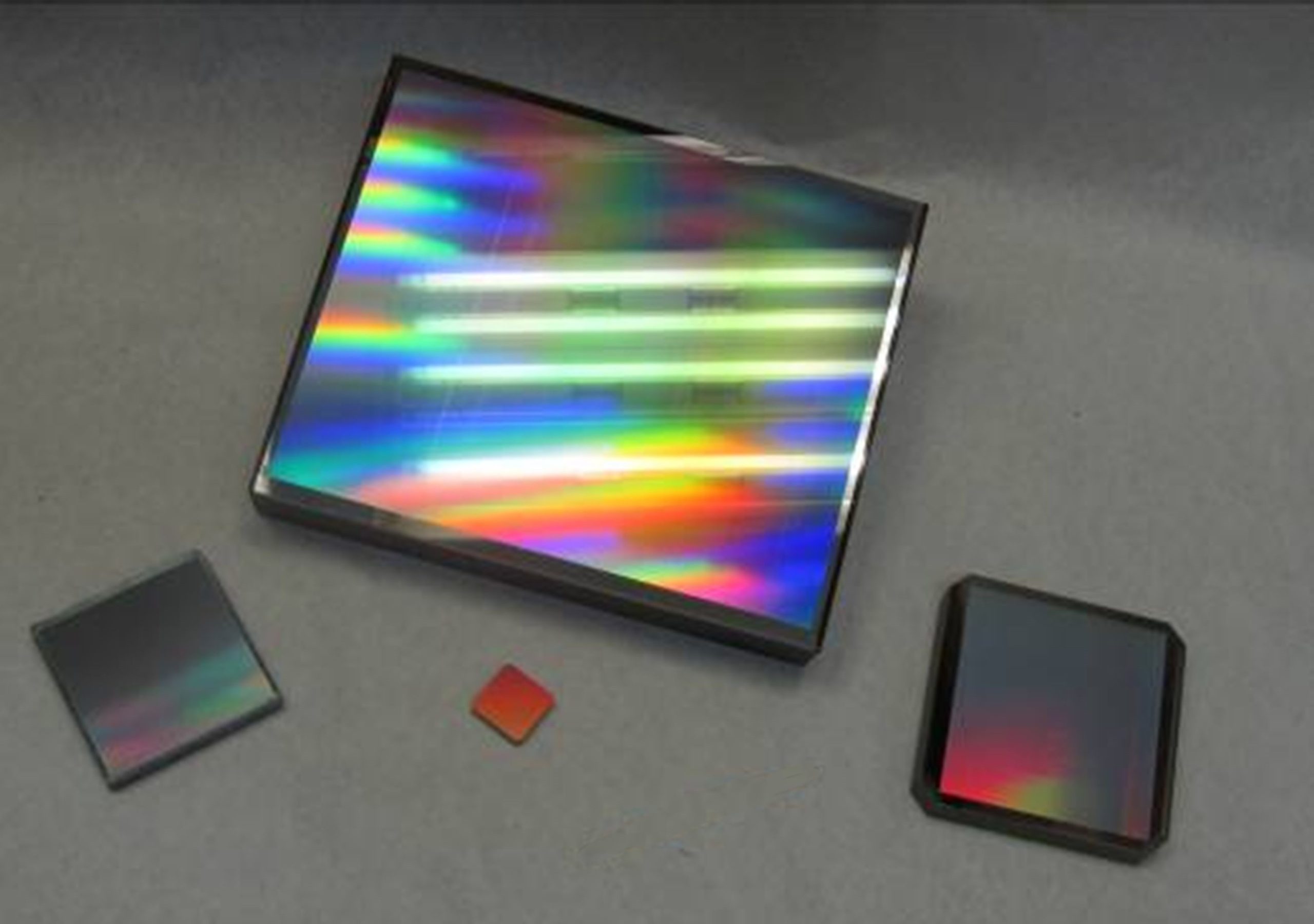We offer high quality PTR glass in bulk and slides form. Our facilities allows us to fabricate up to 1 liter of glass with maximal aperture of 10 x 10 cm.
Photo-thermo-refractive (PTR) glass is a type of specialty optical glass that is designed to change the refractive index when subjected to laser radiation and heat treatment [1, 2]. This property makes PTR glass ideal for use in a variety of applications, including laser systems, optical communication networks, and medical equipment [3].

This change in refractive index results in a change in the way light travels through the glass, which can be used to control the light path and improve the performance of optical systems. For example, it can be used to record holographic optical element like volume Bragg gratings and mirrors and be used in laser beam combining systems enabling High power Laser directed energy weapons [4].
In optical communication networks, PTR glass is used to modulate the optical signal, allowing it to be transmitted over long distances with minimal loss. Band-pass filters, Notch filters and Spatial filters can be fabricated with photo-thermo-rafractive glass. They are particularly useful in fiber-optic communication systems, where the signal must be maintained over long distances. Despite fiber Bragg gratings are commonly used in fiber optic systems, however they have limitations, such as only allowing retro-reflection and not reflecting at an angle. This requires the use of a Faraday circulator to extract the reflected beam. To overcome this disadvantage, volume Bragg gratings are used as an alternative. With this type of grating, multiple gratings can be included in a single glass piece, resulting in a more compact and efficient design [5].
Photo-thermo-refractive glass also can be used in thermal imaging applications as a thermometer to measure the temperature of objects by measuring the change in the grating response. This makes PTR glass useful for a variety of industrial applications, such as measuring the temperature of electronics, engines, and other high-temperature objects.
Additionally, PTR glass can be used to record chirped mirrors and gratings. These elements are used in ultra short mode-locked lasers. Chirped mirrors makes possible to achieve a broader reflection bandwidth than ordinary Bragg mirrors. Where as chirped grating can stretch or compress ultrashort femtosecond laser pulses [6].

PTR glass is a challenging material to manufacture, as it requires precise control over the composition and processing of the glass. Have over 10 years of expertise in optical and PTR glass. Interstellar Glass LLC offers custom photo-thermo-refractive glass solutions for various applications that require high-performance optical glass materials.

Perfomance icons ??
Contact us form button?
References:
[1] Ivanov, S., Dubrovin, V., Nikonorov, N., Stolyarchuk, M., & Ignatiev, A. (2019). Origin of refractive index change in photo-thermo-refractive glass. Journal of Non-Crystalline Solids, 521, 119496.
[2] Dubrovin, Victor D., et al. “Luminescence of silver molecular clusters in photo-thermo-refractive glasses.” Optical Materials 36.4 (2014): 753-759.
[3] https://idstch.com/technology/photonics/high-power-laser-directed-energy-weapons-becoming-feasible-beam-combining-technologies-2/
[4] Lumeau, Julien, and Edgar Dutra Zanotto. “A review of the photo-thermal mechanism and crystallization of photo-thermo-refractive (PTR) glass.” International Materials Reviews 62.6 (2017): 348-366.
[5] Nikonorov, N., Aseev, V., Dubrovin, V., Ignatiev, A., Ivanov, S., Sgibnev, Y., & Sidorov, A. (2018). Photonic, plasmonic, fluidic, and luminescent devices based on new polyfunctional photo-thermo-refractive glass. Optics, photonics and laser technology, 83-113.
[6] Smirnov, Vadim, et al. “High Efficiency Chirped Bragg Gratings in PTR Glass for fs Pulse Stretching and Compression.” Fiber Laser Applications. Optica Publishing Group, 2011.


Leave a Reply